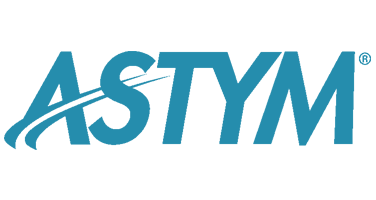27 Jun Astym and Soft Tissue Mobilization are Very Different
Soft tissue mobilization (STM) is a very broad term. It can include all types of manipulating or “mobilizing” soft tissue in an effort to decrease pain and improve movement. Tools have been added to soft tissue mobilization which is called IASTM or Instrument Assisted Soft Tissue Mobilization (Graston, St3 Fuzion, etc. are brands of IASTM). The goal of instrumented STMs, or IASTM, is clear and simple: to mechanically break apart adhesions.
Rather than simply mobilizing tissue (STM), or mechanically breaking apart tissue (instrumented STM or IASTM), Astym treatment activates an underlying physiological response leading to the regeneration of soft tissues.
KEY DIFFERENCES
|
Astym Treatment |
STM and Instrumented STM or IASTM |
|
Regenerates soft tissues
|
“Releases” or breaks apart tissue |
|
Neural changes: immediate improvement in strength and function that speeds recovery
|
No neural changes have been noted |
|
Due to the regenerative capabilities of Astym, it has many applications, including degenerative tendinopathies, dysfunctional scar tissue, degenerated plantar fascia or other soft tissues, pain or dysfunction after surgery or trauma, sprains and strains, and many other soft tissue injuries
|
Applications limited to cases where mobilization, loosening or breaking of tissue will resolve the problem |
|
Peer Reviewed Research
|
Little to no reliable research |
|
Scientifically developed
|
Trial and error based |
|
Underlying pathology is directly addressed; resolution of conditions is usually long term, with little recurrence
|
Underlying pathology is not addressed; symptoms sometimes resolve temporarily, but often return |
|
Specific, defined protocols with reliable results |
Variable applications with variable results
|
Astym treatment and its specific protocols have been developed from scientific and clinical research to activate an underlying physiological response leading to the regeneration of soft tissues. The Astym protocols deliver appropriate doses of shear forces and other proper stimulation to the involved tissues that induce physiological changes on a cellular level. It took years of scientific and clinical research to develop and refine these protocols to induce this beneficial physiological response. The regenerative response that Astym treatment induces does not occur with instrumented or manual soft tissue mobilization. Although manual soft tissue mobilization and instrumented soft tissue mobilization can have some real benefits, they do not have the dramatic, regenerative benefits that occur from Astym treatment.
Click this link if you would like additional information on Astym vs. IASTM (Graston, etc.).




